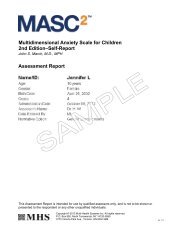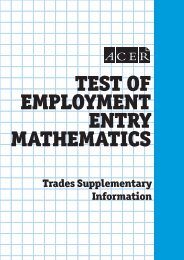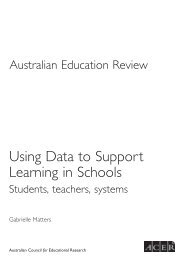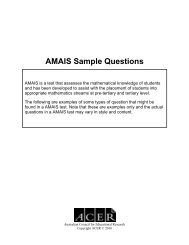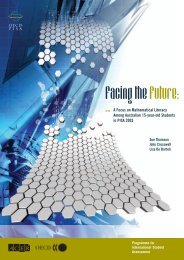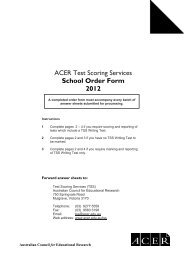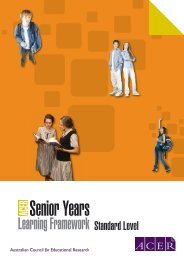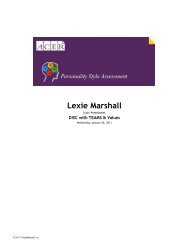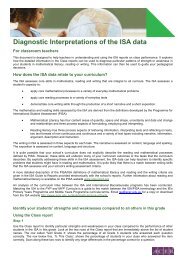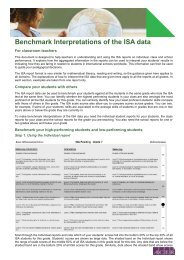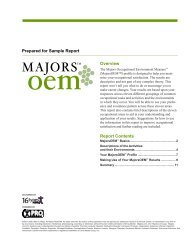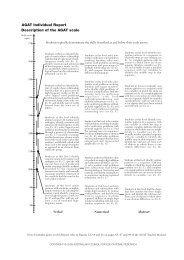National School Improvement Tool - ACER
National School Improvement Tool - ACER
National School Improvement Tool - ACER
Create successful ePaper yourself
Turn your PDF publications into a flip-book with our unique Google optimized e-Paper software.
7<br />
Differentiated<br />
teaching and<br />
learning<br />
The school places a high priority on ensuring that, in their day-to-day teaching,<br />
classroom teachers identify and address the learning needs of individual students,<br />
including high-achieving students. Teachers are encouraged and supported to<br />
monitor closely the progress of individuals, identify learning difficulties and tailor<br />
classroom activities to levels of readiness and need.<br />
The assessment of this domain includes<br />
consideration of the extent to which:<br />
•§<br />
teaching practices across the school<br />
reflect the belief that, although students<br />
are at different stages in their learning<br />
and may be progressing at different<br />
rates, all students are capable of learning<br />
successfully if motivated and given<br />
appropriate learning opportunities and<br />
necessary support;<br />
•§<br />
teachers work at understanding where<br />
students are in their learning – including<br />
their current knowledge, skills, learning<br />
difficulties and misunderstandings – to<br />
identify starting points for teaching;<br />
•§<br />
teachers work to ensure that all students<br />
– including high-achieving students – are<br />
appropriately engaged, challenged and<br />
extended by designing classroom activities<br />
to meet students’ learning needs, levels<br />
of readiness, interests, aspirations and<br />
motivations;<br />
•§<br />
teachers consult with parents and with<br />
students themselves to ensure that<br />
reasonable adjustments are made to meet<br />
the needs of students with disabilities,<br />
including through the development of<br />
individual learning plans;<br />
•§<br />
teachers closely monitor the progress of<br />
individual students and continually adjust<br />
their teaching in response to the progress<br />
that individuals are making;<br />
•§<br />
teachers encourage and assist students<br />
to monitor their own learning and to set<br />
goals for future learning;<br />
•§<br />
communication with parents and<br />
families provides information about<br />
where students are in their learning,<br />
what progress they have made over time,<br />
and what they might do to support their<br />
children’s further learning; and<br />
•§<br />
tailored, early and sustained interventions<br />
are in place for students identified as<br />
requiring additional support, including<br />
students returning to school after a period<br />
of absence/disengagement.<br />
14



